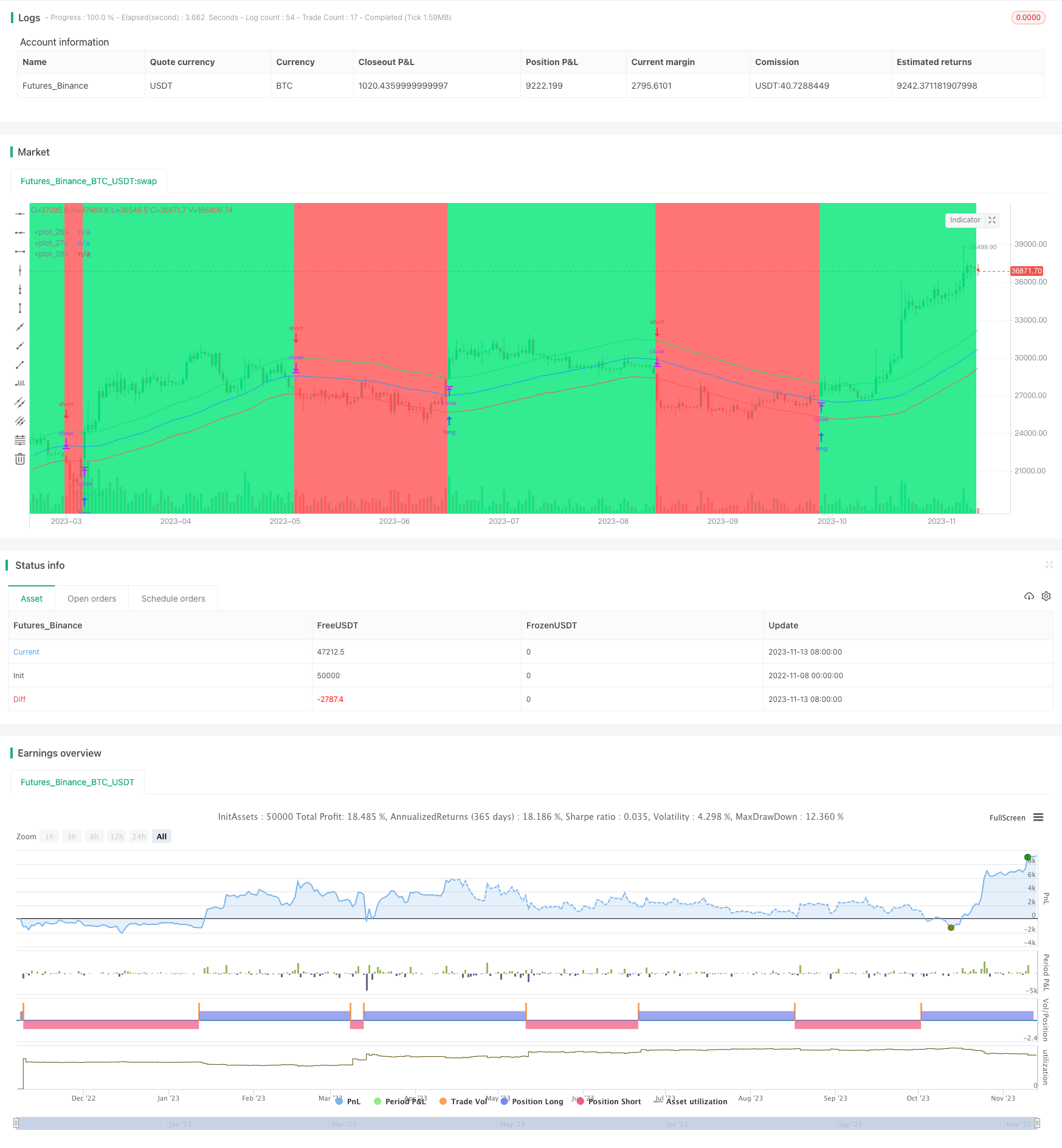
概述
该策略是一个基于双移动均线的止损策略。它使用两个移动均线,一个为主均线,一个为止损线。当价格高于主均线时做多,当价格低于止损线时平多仓;当价格低于主均线时做空,当价格高于止损线时平空仓。通过动态调整做多做空的价格,实现止损止盈。
策略原理
该策略使用sma函数计算长度为len的简单移动平均线作为主均线ma。然后根据用户输入的多头止损百分比elpercent和空头止损百分比espercent,计算出多头止损线el和空头止损线es。具体计算公式为:
el = ma + (ma * elpercent / 100) es = ma + (ma * espercent / 100)
其中elpercent和espercent分别代表主均线上下偏移的百分比。
这样就得到了三条线:主均线ma、多头止损线el、空头止损线es。
策略的交易逻辑为:
如果收盘价格高于多头止损线el,则开多仓;如果收盘价格低于空头止损线es,则平多仓。
如果收盘价格低于空头止损线es,则开空仓;如果收盘价格高于多头止损线el,则平空仓。
策略优势
使用双移动均线设定止损止盈点,可以有效控制风险。
主均线长度len和偏移百分比elpercent、espercent都可以自定义,可以针对不同市场调整参数,适应性强。
采用止损机制,可以及时止损,避免亏损进一步扩大。
策略思路简单清晰,容易理解实现,适合新手学习。
可同时做多做空,充分利用双向行情。
风险及解决
回测数据拟合风险。移动均线策略对历史数据拟合性较强,实盘效果可能会有差异。解决方法是在复杂多变的市场中实盘验证,根据实盘情况调整参数。
止损点过于接近带来的风险。如果止损点设定过于接近主均线,可能会被短期价格波动触发止损。可以适当拉大止损距离来避免。
双边交易带来的资金压力。做多做空同时进行,需要准备足够资金作为保证金。可以适当降低仓位来控制资金压力。
参数优化风险。不同市场情况下参数设置会有较大差异,需要花时间对参数进行优化。可以采用机器学习等技术辅助参数优化。
优化方向
可以考虑加入更多指标判断市场趋势,提高决策效果。例如加入量价指标、波动指标等。
可以研究自动优化移动均线长度len和止损参数,使之能根据市场变化调整。
可以加入对交易品种的过滤,只在趋势明显的品种下交易。
可以考虑把止损方式改为追踪止损,根据价格实时调整止损点。
可以建立参数优化的评估体系,利用回测结果自动寻找最优参数组合。
总结
该策略整体思路清晰易懂,使用双移动均线进行止损,可以有效控制风险。策略具有参数可调、适应性强等优点,但也存在回测数据拟合、止损距离设置等问题需要注意。通过进一步优化,该策略可以成为一个易于实盘的有效止损策略。它适合作为新手学习算法交易的起点,在实践中不断完善,逐步形成独特的交易系统。
/*backtest
start: 2022-11-08 00:00:00
end: 2023-11-14 00:00:00
period: 1d
basePeriod: 1h
exchanges: [{"eid":"Futures_Binance","currency":"BTC_USDT"}]
*/
//Noro
//2019
//@version=4
strategy(title = "Robot WhiteBox StopMA", shorttitle = "Robot WhiteBox StopMA", overlay = true, default_qty_type = strategy.percent_of_equity, default_qty_value = 100, pyramiding = 0)
//Settings
needlong = input(true, defval = true, title = "Long")
needshort = input(false, defval = false, title = "Short")
len = input(50)
src = input(ohlc4)
elpercent = input(5.0, minval = 0, maxval = 100, title = "Shift long, %")
espercent = input(-5.0, minval = -100, maxval = 0, title = "Shift short, %")
showlines = input(true, defval = true, title = "Show lines")
showbg = input(true, defval = true, title = "Show background")
//Levels
ma = sma(src, len)
el = ma + ((ma / 100) * elpercent)
es = ma + ((ma / 100) * espercent)
//Lines
colel = showlines ? color.lime : na
colma = showlines ? color.blue : na
coles = showlines ? color.red : na
plot(el, color = colel, offset = 1)
plot(ma, color = colma, offset = 1)
plot(es, color = coles, offset = 1)
//Background
trend = 0
trend := high > el[1] ? 1 : low < es[1] ? -1 : trend[1]
colbg = showbg == false ? na : trend == 1 ? color.lime : trend == -1 ? color.red : na
bgcolor(colbg, transp = 80)
//Trading
if ma > 0
strategy.entry("Long", strategy.long, needlong ? na : 0, stop = el)
strategy.entry("Short", strategy.short, needshort ? na : 0, stop = es)